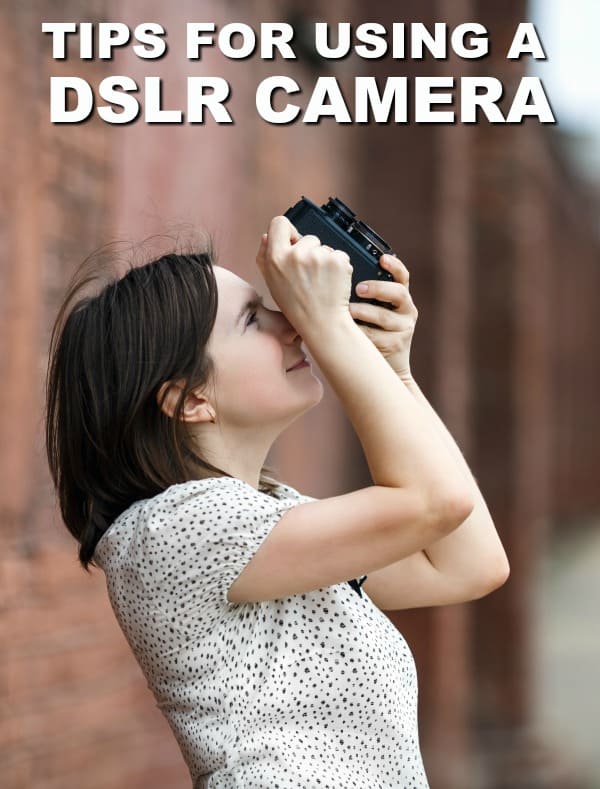Last Updated on December 28, 2017 by Ellen
I’m sharing a few expert tips for using a DSLR camera. Several years ago, I invested in a Canon Rebel T2i to improve my photography. At the time, I thought that having a better camera was all I really needed to improve my photos. Of course, I learned that there are a lot of other variables involved in the quality of your photos. Here are just a few. This post contains affiliate links, and I will receive compensation if you make a purchase after clicking on my links.
Posts may be sponsored. This post contains affiliate links, which means I will make a commission at no extra cost to you should you click through and make a purchase. As an Amazon Associate I earn from qualifying purchases.

4 Expert Tips for Using a DSLR
These tips are specifically for those that use a DSLR camera, although several of them will help you no matter what camera you use. I really do recommend that you invest in a good quality DSLR. Once you know how to use all of the options, the difference in your photographs is amazing.
Use Focal Length
Use a the longest focal length you can with the space you have – ideally 90mm on full frame or longer to help make the objects look more natural. Shorter focal lengths (less than 50mm on full frame) tend to exaggerate near-far dimensions and make products look weird.
Invest in a Macro Lens
If you are doing a lot of product photography a macro lens may be a good purchase. They are sharper than zooms, and allow you to get even closer for highly detailed photos. Plus they are fun for going outside and taking pictures of flowers.
Adjust the ISO
Use the camera’s lowest ISO setting for the lowest noise, set the F-stop to f/8 or higher (f/8, f/11, f/16, etc), and use a tripod for the sharpest pictures. An exposure time of 2 seconds or longer is not uncommon in product photography so don’t worry as long as you have the tripod. With this setup and good lighting, a T2i is actually close to a much newer camera.
Play With Exposure
Bracket – experiment with different “exposure compensation” levels to get the exposure set up the way you want it. Light, dark, and shiny items are especially tricky to get right – even for modern cameras.
Experiment with Light
Experiment with light placement to emphasize the shape and textures of what you are taking pictures of. Move the lights around a bit – closer and further, left and right. If you are shooting something shiny pay attention to how the reflections look.
Add Your Information
If you get good enough at product photography an interesting thing happens taking pictures for resale. Second hand and “cottage industry” customers expect a certain level of “amateur flaws” in a product photo and view photos that are too good with suspicion. Remove their doubt and solve your problem by taking pictures of your item with a card with some info on it in your photos. I use name, forum handle/email address/website, and the date (if it’s a one-time-sale). At this point you have worked hard to get these photos this way (its not really *that* much harder once you learn how) but even if your photos are average this will also prevent people from stealing your photos!

Ellen is a serial entrepreneur who owns 9 profitable blogs, two printable stores, an online vintage jewelry business, and a variety of other work at home endeavors. She shares tips for working at home successfully.
I love my DSLR it can be tricky though especially for anyone new to them , this is a great resource.
I feel the same way. Once you know how to use it, it’s amazing!
Great tips – thanks for sharing!
You are very welcome, Nicole!
Thanks for the tips! I love using a macro lens
Glad to help!